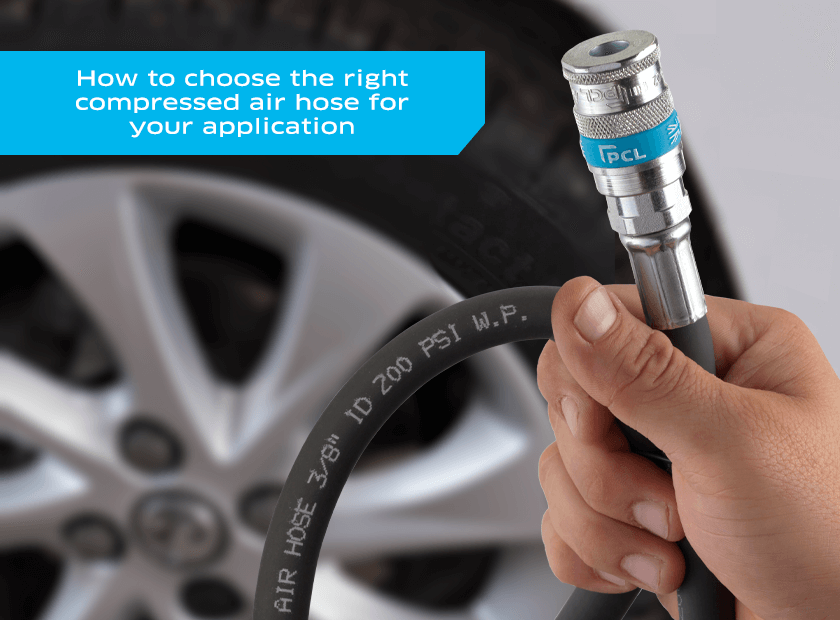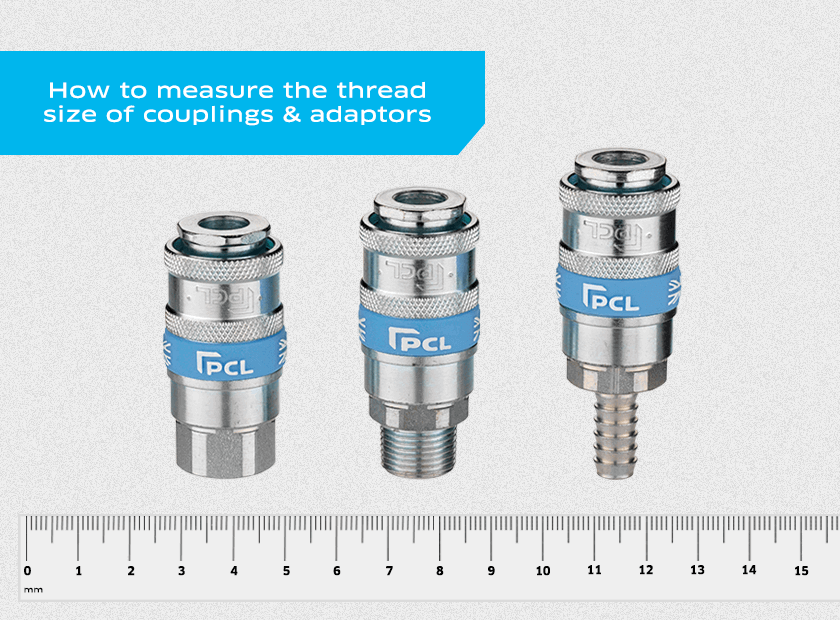To change air compressor hose fittings, first release the air pressure, then remove the old fitting. Replace it with a new one.
changing air compressor hose fittings is essential for maintaining efficiency and safety. Faulty or worn-out fittings can lead to air leaks, reducing the compressor’s performance and possibly causing damage. The process is straightforward and requires only a few tools. Ensuring that you use compatible and high-quality fittings can extend the lifespan of your air compressor.
This guide will walk you through the steps to properly change and replace air compressor hose fittings, allowing you to keep your equipment in optimal condition. Regular maintenance can save time and money in the long run, making it a worthwhile investment.

Tools And Materials Needed
Changing air compressor hose fittings is a necessary task. It requires the right tools and materials. Having the proper equipment ensures a smooth and safe process. Below, we outline the essential tools and required materials for this job.
Essential Tools
- Wrench Set: Different sizes for various fittings.
- Pipe Cutter: For clean cuts on the hose.
- Thread Seal Tape: Ensures a tight seal.
- Air Compressor Oil: For lubrication if needed.
- Safety Gloves: Protects your hands during the process.
Required Materials
| Material | Description |
|---|---|
| Replacement Hose | New hose for the compressor. |
| New Fittings | Compatible with your air compressor. |
| Hose Clamps | Secure the hose to the fittings. |
| Rubber Gaskets | Prevent leaks at the connection points. |
Safety Precautions
Working with air compressors requires following essential safety precautions to avoid accidents. Here, we outline key steps to ensure your safety while changing air compressor hose fittings.
Personal Protective Equipment
Always wear the right Personal Protective Equipment (PPE). This includes safety glasses to protect your eyes from debris. Wear gloves to prevent cuts and abrasions.
- Safety glasses – Shield your eyes from flying particles.
- Gloves – Guard your hands against sharp edges and hot surfaces.
- Ear protection – Reduce noise exposure from the compressor.
Ensure your PPE is in good condition. Replace any damaged gear immediately.
Safe Work Area
Maintain a safe work area to avoid tripping and other hazards. Keep your workspace clean and organized.
Remove any unnecessary tools or debris. Ensure good lighting to see what you are doing.
| Safety Measure | Description |
|---|---|
| Clean Area | Remove clutter to prevent trips and falls. |
| Good Lighting | Ensure visibility to avoid errors. |
| Proper Ventilation | Reduce inhalation of dust and fumes. |
Use a stable surface to place your tools and parts. This prevents accidental drops and damage.
Follow these safety precautions to ensure a secure environment while replacing your air compressor hose fittings.
Preparing The Air Compressor
Before replacing air compressor hose fittings, prepare the air compressor properly. This ensures safety and efficiency. Follow these steps meticulously to avoid accidents or damage.
Power Off
First, turn off the power to the air compressor. Unplug it from the electrical outlet. This step prevents accidental startups, which can be dangerous.
Release Pressure
Next, you need to release the pressure from the air compressor. This is crucial for safety. Follow these steps:
- Locate the pressure release valve.
- Turn the valve slowly to release air.
- Wait until the pressure gauge reads zero.
Releasing the pressure ensures no accidental air bursts. This makes the process safer.
By following these steps, your air compressor is now ready for hose fitting replacement. This preparation is essential for a smooth, safe process.

Removing The Old Hose Fittings
Changing your air compressor hose fittings ensures a smooth operation. This process starts with removing the old hose fittings. Follow the steps below for a seamless experience.
Identify Connection Points
First, locate where the hose connects to the compressor. These are the connection points. Look closely at the hose and compressor interface. This step is crucial for a successful fitting removal.
Here are common connection points:
- Air compressor outlet
- Hose end fittings
- Pressure regulator
Use Proper Tools
Using the right tools ensures a hassle-free removal. Here are the essential tools:
| Tool | Purpose |
|---|---|
| Wrench | Loosen tight fittings |
| Pliers | Grip and remove fittings |
| Thread Tape | Seal new connections |
Ensure you use these tools correctly to avoid damage. Improper use can lead to air leaks.
Follow these steps to remove old hose fittings:
- Turn off the air compressor.
- Release any air pressure in the hose.
- Use a wrench to loosen the fitting.
- Grip the hose with pliers and twist it off.
These steps ensure you remove the old fittings safely and efficiently.
Selecting The New Hose Fittings
Choosing the right hose fittings for your air compressor is crucial. The correct fittings ensure smooth operation and prevent leaks. This section will guide you in selecting the new hose fittings.
Compatibility Check
First, ensure the new fittings match your air compressor. Check the size and thread type. The most common sizes are 1/4″ and 3/8″. Use a thread gauge for accuracy. Verify that the material of the new fittings is compatible. Common materials include brass, steel, and aluminum.
| Size | Thread Type | Material |
|---|---|---|
| 1/4″ | NPT | Brass |
| 3/8″ | BSP | Steel |
| 1/2″ | Metric | Aluminum |
Quality Considerations
Quality is key for durability and performance. Look for fittings that are corrosion-resistant. High-quality fittings last longer and perform better. Check for any certifications or standards. ISO and ANSI certifications indicate good quality.
- Corrosion-resistant materials
- Certified by ISO or ANSI
- High durability
Choose fittings that are easy to install. Quick-connect fittings save time and effort. Ensure the fittings can handle the compressor’s pressure rating. High-pressure ratings ensure safety and efficiency.
- Quick-connect for easy installation
- High-pressure rating for safety
Installing The New Hose Fittings
Changing air compressor hose fittings can be simple. Proper steps ensure safety and efficiency. Below are steps to install new hose fittings.
Proper Alignment
Start by aligning the new fitting with the hose. Ensure it matches exactly. Misalignment can cause leaks. Hold the hose firmly. Insert the fitting straight into the hose. This helps in creating a tight seal.
Secure Connection
Once aligned, it’s time to secure the connection. Use a wrench to tighten the fitting. Turn clockwise until snug. Do not over-tighten. Over-tightening can damage the hose or fitting. Check for a secure fit by pulling gently on the hose. Ensure there is no movement.
Here is a table to summarize the steps:
| Step | Description |
|---|---|
| 1 | Align the fitting with the hose |
| 2 | Insert the fitting straight into the hose |
| 3 | Tighten the fitting with a wrench |
| 4 | Check for a secure fit |
Follow these simple steps. Ensure your air compressor works efficiently.
Testing The New Setup
After replacing the air compressor hose fittings, testing the new setup is crucial. This ensures the system is safe and efficient. Follow these simple steps to verify your new fittings.
Pressure Test
To start, conduct a pressure test on the air compressor. Turn on the compressor and let it build up pressure. Monitor the pressure gauge closely. Ensure the pressure reaches the normal operating level.
If the pressure drops quickly, there might be a problem. Check the fittings again. Tighten them if needed. Repeat the pressure test until the pressure remains stable.
Leak Detection
Next, perform a leak detection test. Mix a small amount of dish soap with water. Apply this soapy solution to the fittings using a brush. Turn on the compressor and watch for bubbles.
If you see bubbles, there is a leak. Tighten the fittings again and apply the soap solution once more. Repeat this process until no bubbles appear.
| Step | Action |
|---|---|
| 1 | Turn on the compressor |
| 2 | Monitor the pressure gauge |
| 3 | Apply soapy water to fittings |
| 4 | Watch for bubbles |
| 5 | Tighten fittings if needed |
By following these steps, you can ensure your new air compressor hose fittings are installed properly. This will help avoid any air leaks and maintain optimal pressure.

Maintenance tips
Maintaining your air compressor hose fittings ensures they last longer and work efficiently. Regular maintenance helps avoid unexpected breakdowns and costly repairs. Here are some maintenance tips to keep your air compressor hose fittings in top shape.
Regular Inspections
Conducting regular inspections on your air compressor hose fittings is crucial. Inspect fittings for any signs of wear, cracks, or damage. Replace any damaged fittings immediately to prevent leaks or accidents.
- Check for loose connections.
- Look for signs of rust or corrosion.
- Ensure the fittings are secure and tight.
A simple inspection can save you from bigger issues. Make it a habit to inspect before every use.
Proper Storage
Proper storage of your air compressor hose fittings extends their lifespan. Store hoses in a cool, dry place away from sunlight. Avoid kinks and twists by coiling hoses neatly.
| Storage Tips | Benefits |
|---|---|
| Coil hoses neatly | Prevents kinks and damage |
| Store in a cool, dry place | Reduces wear and tear |
| Avoid direct sunlight | Prevents material degradation |
Proper storage keeps your fittings in good condition. This ensures they are ready for use anytime.
Frequently Asked Questions
How To Change Air Compressor Hose Fittings?
To change air compressor hose fittings, first turn off and unplug the compressor. Release the pressure. Unscrew the old fitting and replace it with the new one. Tighten it securely.
What Tools Are Needed To Replace Hose Fittings?
You will need a wrench, pliers, and Teflon tape to replace air compressor hose fittings. These tools ensure a secure and leak-free connection.
How Often Should Hose Fittings Be Replaced?
Hose fittings should be replaced when they show signs of wear, leaks, or damage. Regular inspection can help identify the right time for replacement.
Can I Use Any Hose Fitting Type?
No, use hose fittings compatible with your air compressor model. Check the manufacturer’s specifications to ensure proper fit and performance.
Conclusion
Changing air compressor hose fittings can be straightforward with proper guidance. Follow these steps to ensure a secure fit. Regular maintenance extends your compressor’s lifespan. Always prioritize safety during replacement. With these tips, your air compressor will function efficiently. Keep your tools in top condition for best results.

